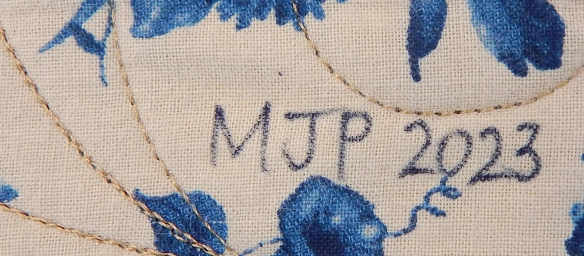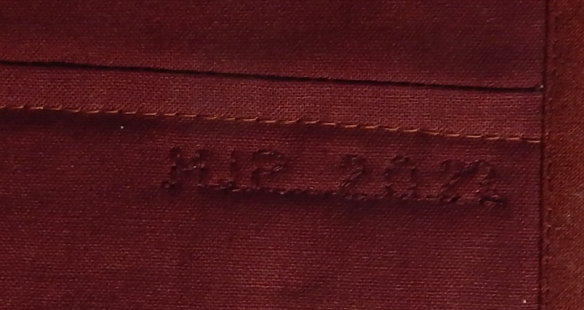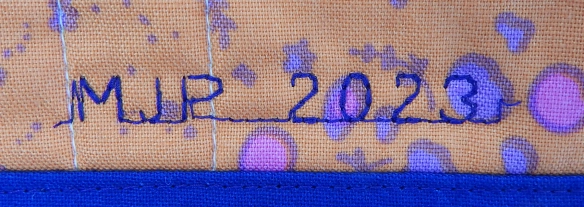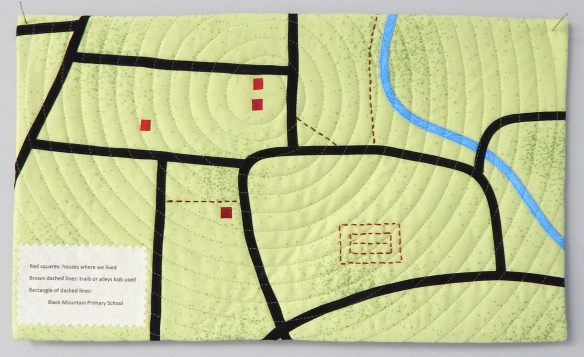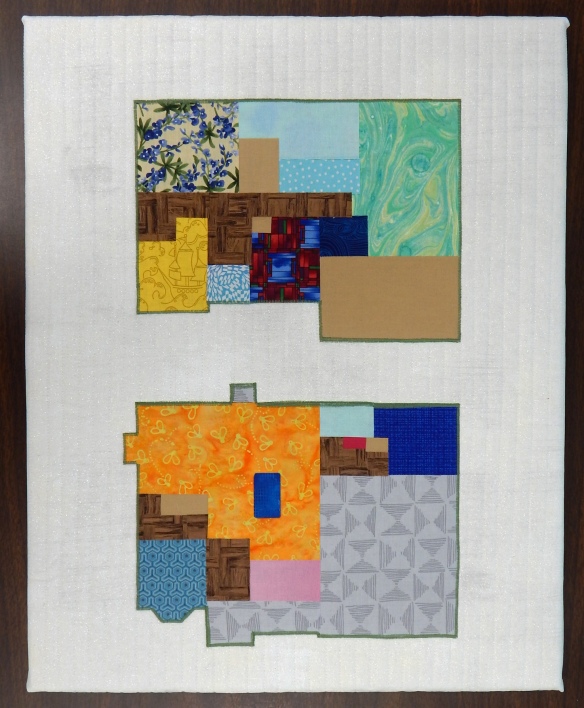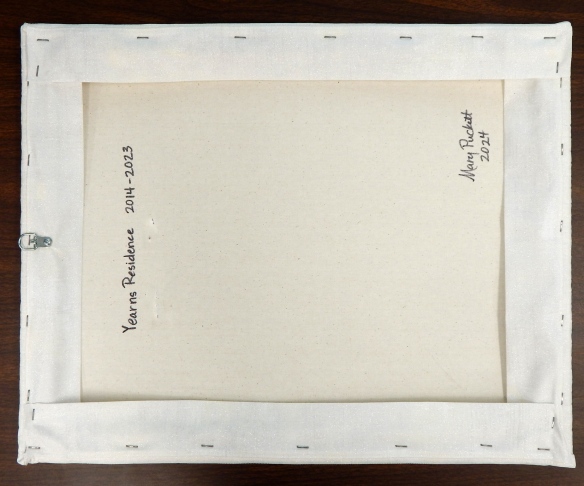A friend recently asked why I use poly batting. The reasons mostly have to do with the aesthetics of my quilts. I use thin, high quality, polyester batting, NOT to be confused with the awful stuff available at the big box store. So here are my reasons:
Main reason: Polyester batting doesn’t shrink. Years ago, when I started designing my own quilts, I used polyester batting to minimize distortion when the quilt is washed. If I’m going to all the trouble to get the design just the way I want it, and make all the points match, I want all that to show, even after the quilt is washed. In short, if I design it, I don’t want the design distorted.
Here’s an example of a quilt where I worked hard to get things straight and square.

Of course this is based on Piet Mondrian’s paintings, and particularly on the Mondrian dresses derived from them
That said, I prewash only selected fabrics, so there’s likely to be some shrinkage of the fabric anyway. At least shrinkage is minimized if the batting doesn’t shrink, too.
Second reason: After hefting quilts made by other people using cotton batting, I appreciate the light weight of polyester batting! I hadn’t realized the difference until I was involved in hanging quilts. Most of those were traditional and had cotton batting. The heft of some of them was amazing.

Above is a king sized quilt I made years ago. It would have been very heavy with cotton batting. Yes, I’ve heard that cotton batting “breathes” and poly batting doesn’t, but do you really feel the difference when you’re sleeping under it? And if you do, is it good or bad?
Third: Poly batting doesn’t crease as easily or hold onto folds after it’s unfolded. Since most of my quilts are stored folded for months at a time, it makes a difference. Also, it’s good to avoid hard folds when I’m shipping a quilt somewhere. The quilt below is one I use for teaching, but it lives in my quilt closet the rest of the time. I like being able to take it out and find it’s ready to go without having to “hang out” the folds.
With all that said, not just any batting will do. I use Quilter’s Dream, a high quality batting available in several lofts. They even make a poly batting from recycled plastic bottles; it’s called Dream Green. I’ve used some other brands and found some of them to be good quality as well, but Quilter’s Dream is my current choice. Which brings me to a final consideration: Request loft, the thinnest, is still suitable for longarm quilting if you choose polyester. The thinnest loft in cotton doesn’t work with a longarm. (By the way, Quilter’s Dream makes excellent cotton batting also, if that’s your jam.)
And finally, there are a couple of exceptions. One of the places I donate quilts is a camp for seriously ill children and they want cotton or 80/20 batting. Thankfully, my quilter stocks it so I can get it easily for those quilts. And when I fail to match points despite my best efforts, I sometimes ask for cotton batting and then wash the quilt as soon as it’s finished 😀 Distortion may not be all bad!
Opinions, anyone?
